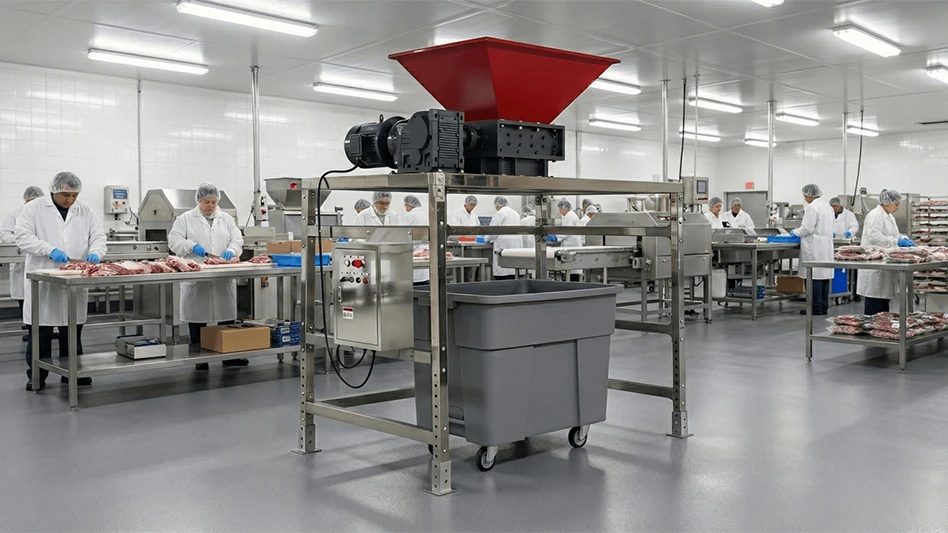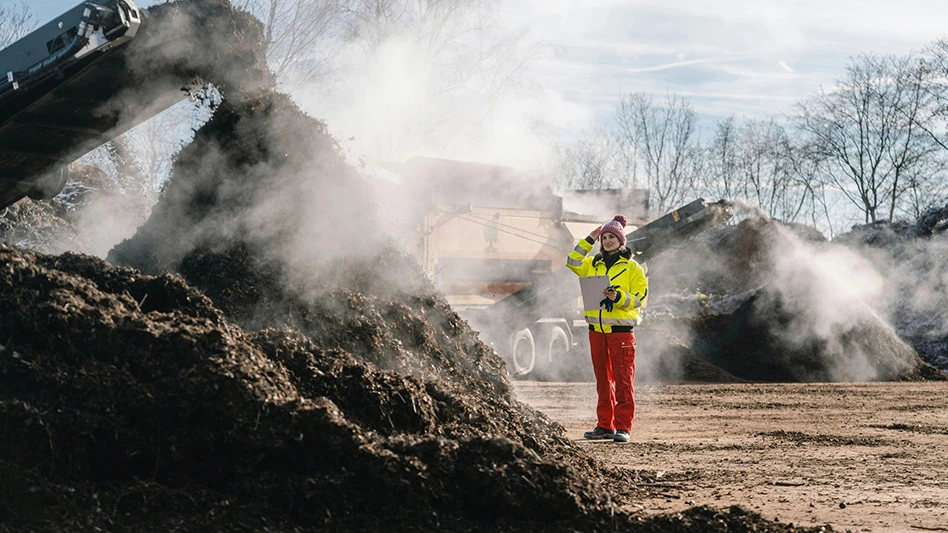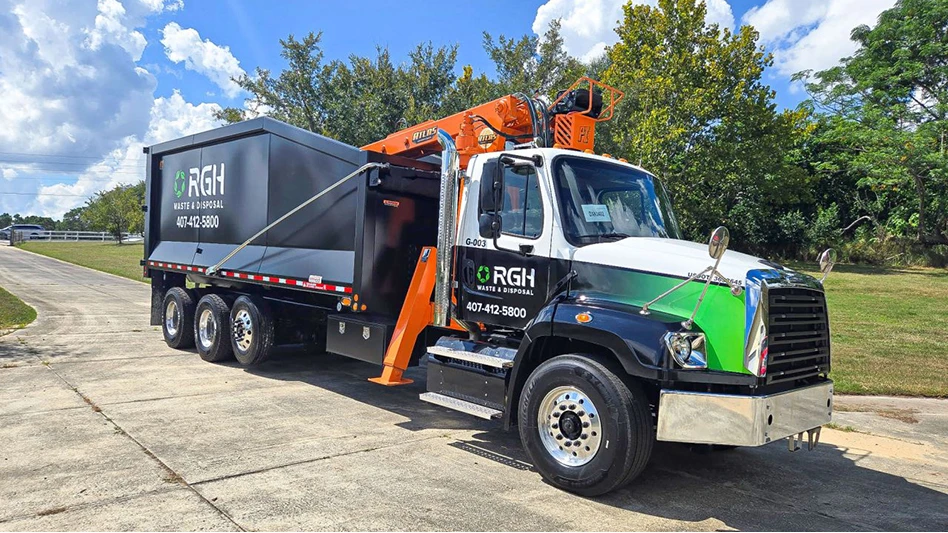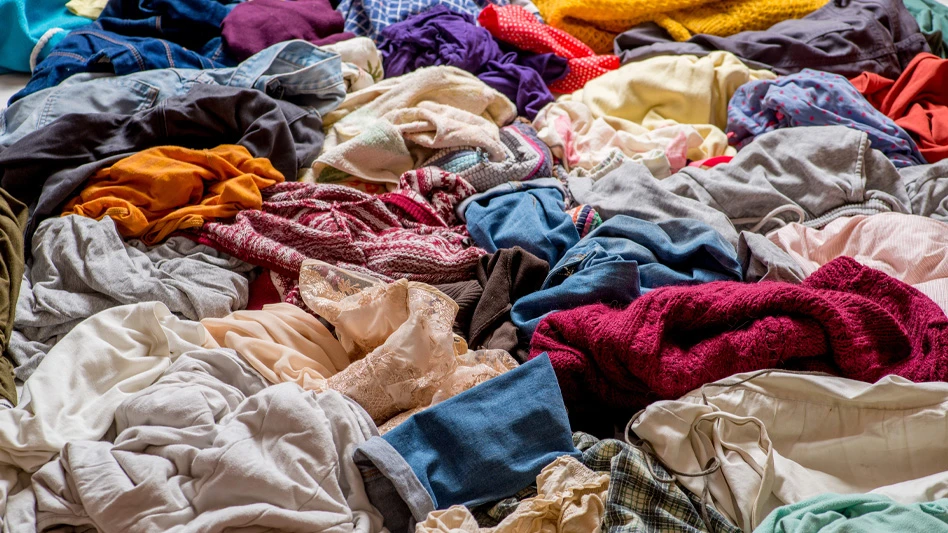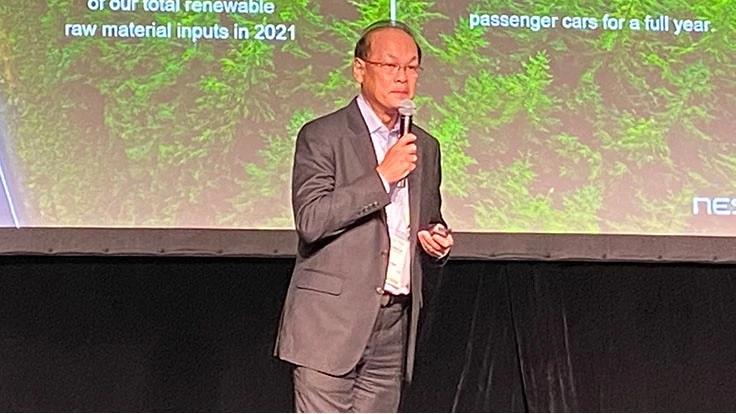
Photo by Waste Today staff.
Ongoing investments to convert discarded materials into fuel or energy range from massive, multi-acre projects to smaller startups pioneering new outcomes for surplus food and food scraps. A series of presentations at the 2022 CleanEnviro Summit Singapore (CESG) event served to demonstrate the differences in scale in that city-state alone.
On the large-scale front, Finland-based Neste has invested heavily into a 64-acre refinery complex in Singapore that produces renewable diesel and other fuel products. According to Neste’s Singapore General Manager Kenneth Lim, an expansion project underway in Singapore is one of several ways the company is “going bigger and faster” to meet and exceed renewable fuel targets the company set earlier this century.
The $1.5 billion Singapore refinery expansion project, announced in 2018 and scheduled for completion next year, involves boosting the refinery’s output from 1.3 million metric tons of annual output to 4.5 million metric tons.
Lim said the conversion away from fossil fuels has been profitable for Neste, with renewables accounting for 92 percent of Neste’s operating profits last year.
End products made in Singapore, and at other Neste refineries, include diesel fuel for road transport vehicles that offers a 90 percent reduction in greenhouse gas (GHG) emissions; aviation fuel being used by Singapore Airlines, Delta and other passenger and cargo carriers; and renewable polymers and chemicals.
Lim said there is room for the renewable refinery sector to grow, and listed byproducts and discarded materials as a significant reason. Although according to a recent study some 1.0 billion metric tons of biofuels could be produced by 2040, the volume made from discarded fats, oils and grease (FOG) and the organic and plastic portions of municipal solid waste (MSW) could amount to more than 300 million metric tons of output globally by then.
The discarded organics stream is the major feedstock at anaerobic digestion (AD) installations, said Dr. Andrew Benedek, CEO of Canada-based AD systems provider Anaergia.
A recent MSW characterization study cited by Benedek portrays 46 percent of that stream as consisting of organic materials, including food scraps and yard waste. Digestible paper comprises another 17 percent, although paper and board mills are paying for much of that fraction.
When food waste goes to a landfill it is an “enormous” source of GHGs, said Benedek. With wet food waste being a bad fit for incineration, Benedek says AD has received considerable attention as an alternative, with some 9,000 AD plants in Germany alone.
Benedek said Anaergia also has been involved in large-scale projects in California, and he credited Singapore for its use of AD in combination with other technologies at the under-construction Tuas Nexus project.
That integrated wastewater and food waste integrated treatment plant may not be as attractive as the nation’s iconic Marina Bay Sands hotel, but Benedek predicted Tuas Nexus will attract plenty of “tourists” of a sort to view a waste conversion plant “worth showing off.”
On a smaller entrepreneurial level, Singaporean Tavin Singh has created the Crust Group as a brewery and beverage maker that uses surplus food as one of its critical inputs.
Singh said Singaporean residents and restaurants generated some 744,000 metric tons of food waste in 2019, with only around 3 percent of that finding some way to be diverted from Singapore’s (only) landfill.
The brewery owner showed an inverted 4Rs pyramid of reduction, redistribution, recycling and (energy) recovery that offers differing methods to keep the material away from a landfill that is projected to be full by 2035.
Singh said a surprising amount of the wasted food in Singapore (393,000 metric tons in 2019, or 53 percent) is “pre-consumer” damaged, surplus or expired food that could be a candidate for the type of recycling being done by the Crust Group.
To that end, Crust Group now also has a product line called Crop that consists of non-alcoholic beverages made with surplus fruit and vegetables as a key input. Part of the solution in Singapore, said Singh, is for Crust to “connect enough dots [to] go from being a brewing company to a food technology company.”
CESG 2022 was held in mid-April at the Marina Bay Sands Singapore Convention Centre.
Latest from Waste Today
- New York finalizes greenhouse gas emissions reporting regulations
- EPA selects 2 governments in Pennsylvania to receive recycling, waste grants
- NWRA Florida Chapter announces 2025 Legislative Champion Awards
- Yolo County reports fatality at Central Landfill
- New Way expands Canadian presence with Joe Johnson Equipment partnership
- Buffalo Biodiesel shares updates on facility modernization, NYSDEC compliance
- CETY launches HTAP platform for anaerobic digestion facilities
- Terex Ecotec announces Blue Machinery as distributor
